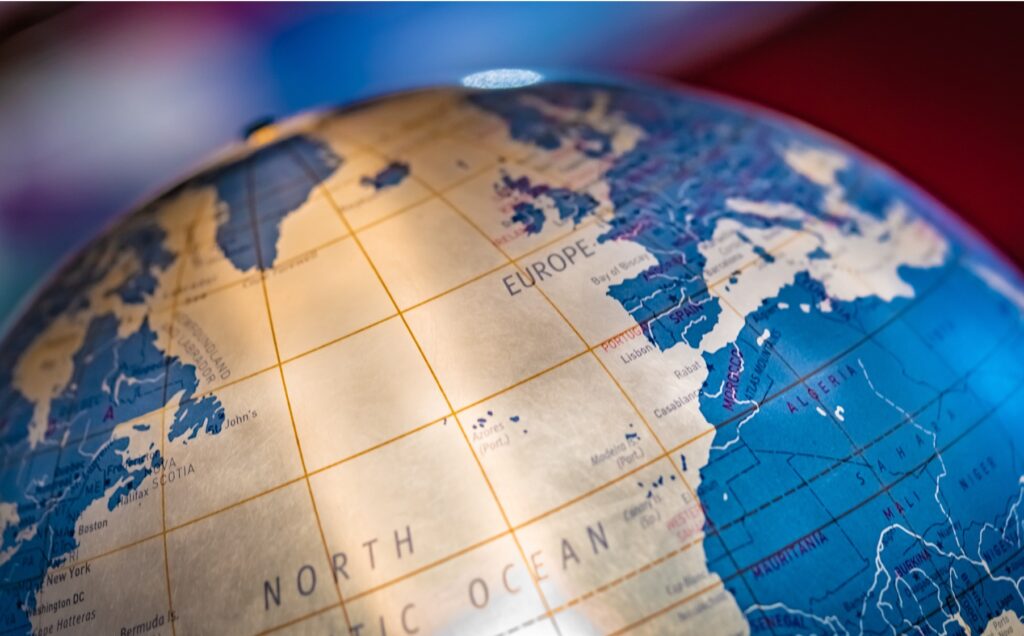
If you’ve ever ventured to visit the Google Arts & Culture website, you’ve probably noticed that the site has an incredible collection of interesting information, photographs, and artwork from around the world. You’ve also probably thought about how you might use this website with students. Below, I’ve generated a list of 15 lesson ideas for the Google Arts and Culture to help you out!
1. Take Students on a Virtual Tour of Machu Picchu
This website has 3-D images and videos linked that explore the word of Machu Picchu. Play some peaceful nature sounds in the classroom while students explore the virtual images and videos. This site specifically, explores the mysteries of Macchu Picchu. Students could focus in on the mysteries, or teacher could devise questions that explore the geography instead.
2. Have students create a Timeline of the Events in 1968
This site contains text and images relating to the pivotal events in 1868 in U.S. History. Students could draft a timeline of those events either digitally or on paper. They could then rank those events and choose which they think was the most transformative. (FYI – they can do the same with practically any historic event. Google Arts and Culture has collections for practically every event in history.)
3. Pick One Image
Have students pick one image to reflect a historical event. When they pick that image, have students generate a list of questions about the image. Or you could have a list of questions they might answer to explain why they chose this particular image to represent an event.
4. Take Students on a Tour of the Metropolitan Museum of Art
Students can take a virtual tour of the entire museum, and then click on particular pieces of art for more detail. Teachers can have students visit a particular section of the museum to have them hone in on the artwork of a particular culture. Students might sketch art they think it particularly impactful, or have students make connections between artwork and history.
5. Examine the Stories of the Holocaust
The history of the Holocaust is best told through primary sources. This site has photos that show the gradual decline in treatment. Students can see photos showcasing the ways in which German and Polish Jews were humiliated in the months before the Holocaust. Examining this site could involve investigating the ways in which the Jewish people were treated. Then students might discuss the impact of these actions on both the perpetrators and the victims.
6. Virtually Explore the Bagan Temples

This is a really neat “experiment” on the site. Students visit an impeccably constructed website where they can explore the Bagan Temples. This website gives students a view and an understanding of the temples that is as close as most can to the real thing. It’s extremely immersive and quite engaging.
7. Visit Ford’s Theatre
With this virtual tour, students can “stand” on the stage and look up to where Lincoln was assassinated. This tour also includes close up photos and descriptions of all kinds of artifacts relating to the theatre and Lincoln’s death.
8. Go on a Virtual Tour of Rio’s Favelas

This is such a neat site. A tour guide will take you through the favelas of Brazil, to learn the stories of the people who inhabit the Brazilian slum. The views are hypnotic and the stories are really engrossing. I could see students utilizing this site in a cultural studies class, or a geography class.
9. Explore the Artwork of a Historic Era
Some eras of history are known especially for beautiful works of art. Students can explore the art of the Renaissance or the art of Impressionism. Students might create a gallery or they can copy and paste images to a Google Slideshow. You could also generate a list of questions you want students to explore. (Be careful, there is lots of nudity in this section of the site.)
10. Visit the Palace of Versailles
Whenever I teach the French Revolution, I always have to have students visit the palace of Versailles. The hall of mirrors elicits audible gasps from students along with the palace gardens. This virtual tour showcases the wealth disparity far better than any description you could provide.
11. Have Students Wander the Taj Mahal
The Taj Mahal is impressive all on its own. In a study of Indian culture, just give students 10 minutes to wander the grounds and take in the geography and the architecture. Have them generate a list of observations. Discuss those observations as a class.
12. Have Students Create their Own Gallery
Students can create a gallery of historical images and add text to that website to show their knowledge and synthesize a historical event. Assign a particular historical event from the events page, and then have students collect images that help tell that story. Students can add text for explanation and to show understanding.
13. Have students Create a Timeline of a Historic Figure
There are hundreds to collections relating to historical figures, and students can make their own with the Life Photo Collection. Assign some historical figures to students and have them create a timeline of the figures life through a gallery. Students can pick images to add to their timeline and then add text to denote specific historical events.
14. Have Students Create Their own Mini Museum
As an assessment, have students pick ten artifacts, pieces or art, or photographs that best describe a culture. With each item, students can describe which aspect of the culture that artifact represents. They can search hundreds of museums and photographs to create their own gallery.
15. Have Students Find their “Art Twin”
If you haven’t already, you do have to tell students to find their virtual twin through the Google Arts and Culture app. They can snap a photo, and the app will tell them which artistic figure best represents their look. It can be really funny, so you have to check this one out!
This post is meant as a jump start to lesson planning for your class. There are 9,420 places, 6,709 historical figures, and 626 historical people currently cataloged on the site. The possibilities are really endless.
Have you use Google Arts and Culture? How has the site enhanced learning in your classroom?

One Response